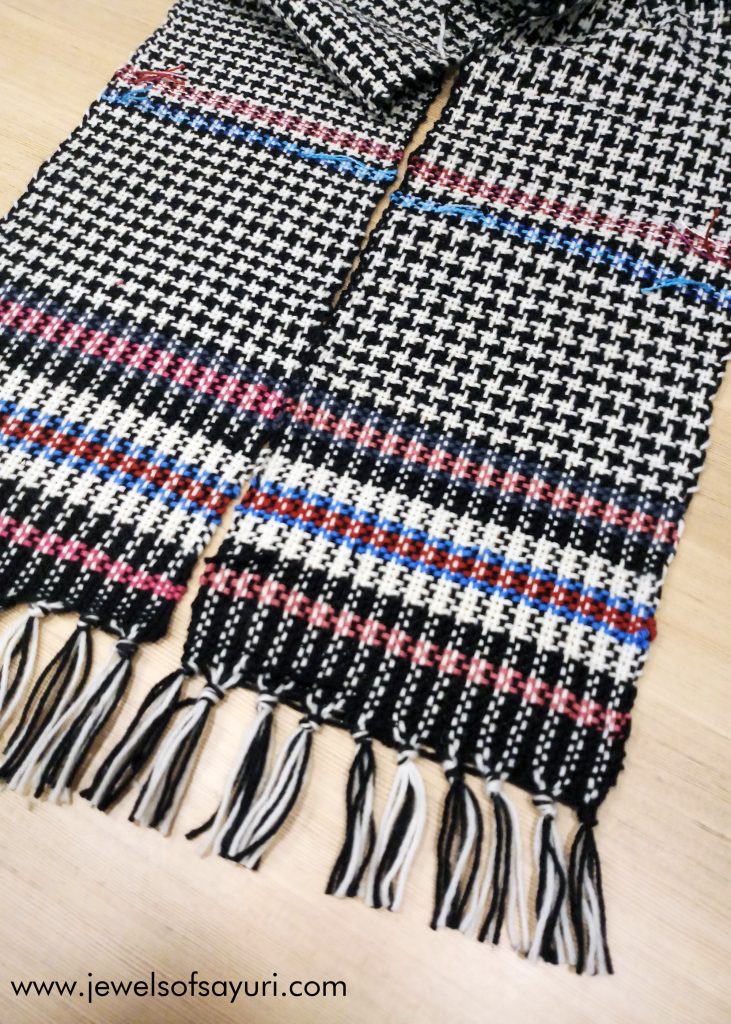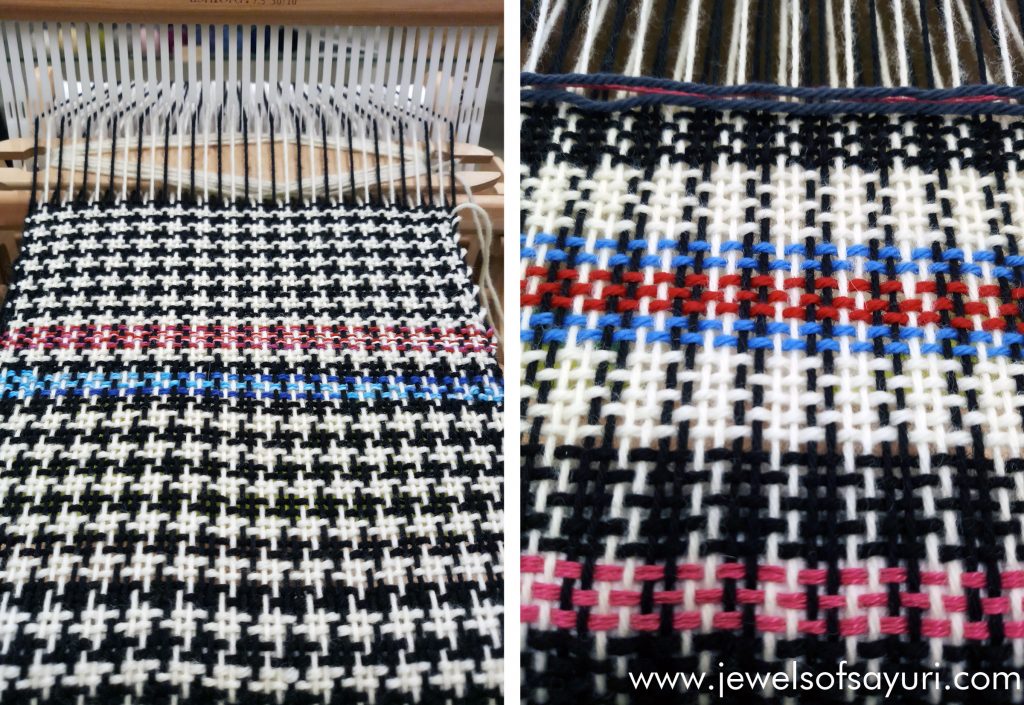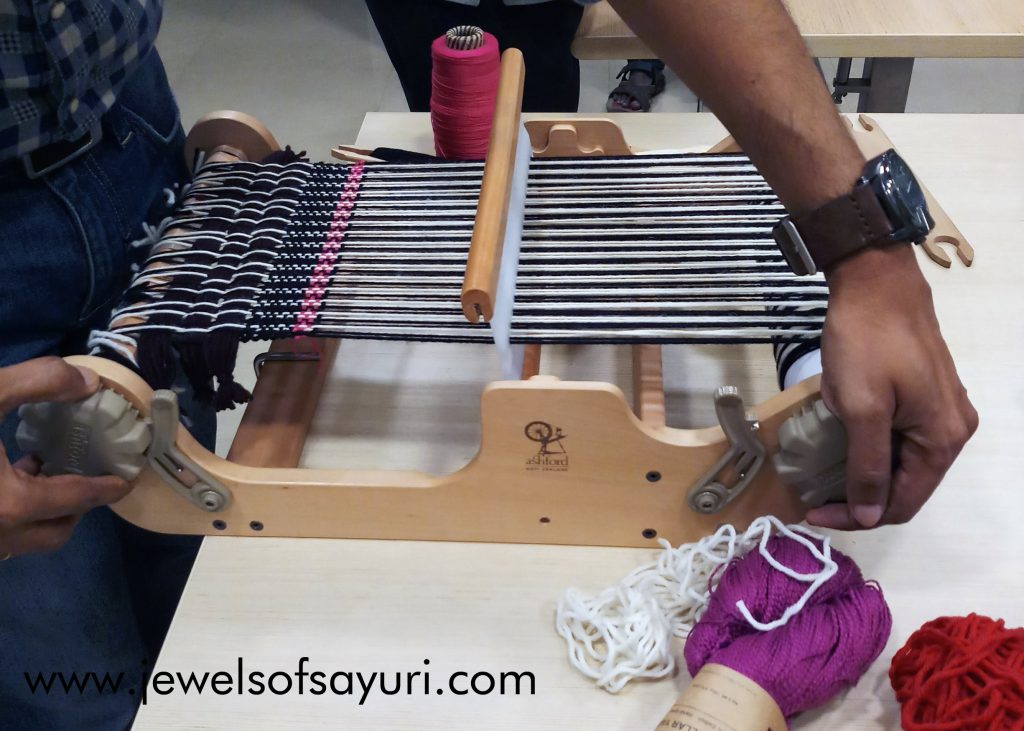Today, that is 7th August, is celebrated as National handloom day in India. It was instituted to promote the handloom industry in India and set in motion a revival of traditional textiles. It was brought into effect by Prime Minister Mr. Narendra Modi on Aug 7, 2015 at Chennai where he also launched the India Handloom mark. Santh Kabir awards were also distributed to artisans for excellence in weaving. Incidentally, I was a part of this programme, very much on the stage as one of the four on stage assistants for the ceremony. Three years have passed and I have marked those years by buying or wearing a handloom product. This year I am going recount my experience of learning how to weave a scarf. But first

Why was Aug 7th chosen as the National handloom day?
Indian history books mark Aug 7, 1905 as the day the Swadeshi movement was officially proclaimed at the Calcutta Town Hall. It was launched as a protest to the partitioning of Bengal. It led to the Boycott of all British goods an historic landmark in India’s Freedom struggle. Manchester cotton was burned and a huge need for India Khaddar rose. The song Vande Mataram set the tone and influenced the art, craft, culture and even journalism during the period. Much later, Gandhiji, foresaw the repercussions of large-scale industrialisation and market economy fed on consumerism. He visualised and used Khadi (Handspun, Handwoven Indian fabric) both as symbol of self sustenance and freedom. (Read more – what Khadi meant to Gandhi)
While the pre-independence Swadeshi movement was essentially a response to colonial policies, the post-independence Swadeshi movement opposed the “Foreign” (imperialistic) policies the post WWII. This millenium sees swadeshi not just as a “return to the roots” attitude. It acknowledges the need to support handloom and handicrafts for sustainability and holistic growth. As a part of the textile and fashion industry in India, it is hard not to be impacted by this surge in handloom revival.
My attempt at learning weaving
Inspired by the creative medium explorations of AJE members in the monthly challenges, I thought of trying my hand at felting or weaving. I visited Shuttles and Needles, a local weaving studio to explore possibilities. Mr. Naresh, a textile technologist and the owner of the studio introduced me to an Ashford, Rigid heddle loom which makes weaving simple. He convinced me that I could weave.
When I signed up for a class, my parents were both amused and surprised. They know that I have a hard time keeping count or following measurements which was my bug-bear throughout my undergrad days. I cannot follow a straight line, which is crucial for weaving. Plus, I was on a hectic schedule at work and the course fees was slightly on the higher side for a casual approach. Add my back pain and nerve compression to the mix, and you would too, like my parents wonder what made me sign up for this class.

Why weaving?
At college, I am often invited to be a part of weaving jury panels. More so because their evaluation is combined with that of design process. While I have admired the handiwork of students, I have always thought of weaving to be too complicated for me. Then I visited Arani (the silk valley of India) as a part my students’ Craft research project. After two full days of being immersed in the intricacies of weaving, I too wanted to give it a try. At this point, some of my students were trying to use a preset saree loom to see if they can create scarves. This set me on this path to explore both scarves and looms.
Apart from learning how to weave a scarf, my one on one class introduced me to the world of yarns. It demystified Houndstooth for me. I got a better understanding of weaving a hobby as its adoption in India, where is still, largely, a caste based rural craft.
How to weave a scarf
- Design – I wanted to create a classic houndstooth scarf with colourful stripe accents. However, I did not plan much beforehand and sort of played with ideas as and when they came. Even hobbyists would know that this is a bad idea for it is difficult to match patterns later on. Four hours into weaving I realised my mistake and created a detailed row by row design chart. It helped that I took photos at every stage.
- Yarn selection – For my warp I choose pure wool yarn in black and white. I used wool for my body and a combination of wool and cotton ( 2 different varieties) in red, blue, pink and blue gray as my accents. I also twisted different yarns together to create my own yarn. It wasn’t funny that I ran out of yarn at one point and had to find the closest “Pink” to finish the line. Trying to incorporate so many colours and textures in the sample, is what I understand to be rookie mistake, now. Nevertheless, at that point, it was fun.

3. Set up of the loom & Warping – Since I took a beginner’s course my 10 inch loom was pre warped. It was warped as two black – two white for I wanted to do a houndstooth pattern.
4. Winding the weft yarn – There is a wooden tool that acts as a shuttle which is wound with the required weft yarn.

- Proof that I actually did the weaving 😀
5. Weaving – weaving in this loom is quite simple as it a table top loom. Unlike a regular loom, you need to stop and manually roll the yarns, every few inches. The reed is used to pick, shed and beat as well. Thus maintaining tension and straightness of line is important. New weft yarn can be added easily at the end of a row. The most difficult part was calculating the no. of rows of a particular design in reverse, without knowing when and where we need to stop weaving. It was embarrassing that something so easy took me 7.5 hours (3 days) to complete. But considering that I constantly corrected my scarf by unravelling the yarns, it sounds okay as a first time effort.
6. Tasseling – To remove the scarf from the loom, the extra length warp yarns are cut and the ends are knotted to create long tassels.
7. Trimming & Finishing – The looped extra thread is cut from the back and the tassles are trimmed to finish the scarf. I was told that the scarf must be worn and washed to settle the yarn tension.

What swadeshi means to me
While the design of my scarf is western, it is woven using Indian yarn in Indian colours, in India by an Indian. For those who are quick to say that “black and white” is not an Indian colour scheme let me point out that almost 14 types of blacks, whites and gray are mentioned in ancient Shastras. Swadeshi to me is not about an outcry for rejecting western products and ideologies. Or proclaiming that I will wear/buy/use only Indian products. It is about equipping myself and teaching my community, skills that makes them sustainable. Historically speaking, we have always been keen on learning and assimilating knowledge and skills from various foreign sources and amalgamating them with the existing. I find no reason to stop that now.
My musings
While signing up for this class I knew that I would probably never weave as a business. I might not even take it up as a hobby. However, as I challenged myself with this task, it was good to know that I could get over a mind block with my perseverance. I learned how to weave a scarf and got my first woollen scarf out of it.
What do you think of my attempt? Have you ever tried your hand at a traditional or a contemporary version of a traditional craft of your land? Tell me in the comments.
I hope you found it interesting
Cheers






Leave a Reply